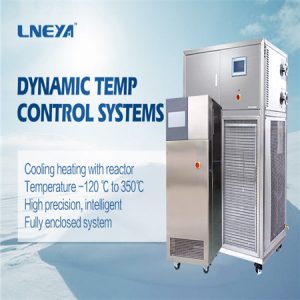Heat transfer oil cleaning instructions in the heat transfer oil secondary circulation system
The heat transfer oil secondary circulation system uses the heat transfer oil as the medium to carry out the refrigeration and heating temperature control. Then, when the user cleans the heat transfer oil in the heat transfer oil secondary circulation system, what should be paid attention to?
There are two reasons for the unstable temperature of the heat transfer oil secondary circulation system. One is that there is gas inside the system, the other is that the filter of the system circulation pump is blocked, and the third is the lack of oil inside the system (this is generally rare). Then, if the pressure gauge is abnormally fluctuating or unstable after adding the heat-conducting oil online cleaning agent, it is generally caused by the blockage of the boiler network. The troubleshooting method is very simple, and only the circulating pump is required to turn off the bypass or the standby cycle. The pump can be used. After the two shut-off valves of the circulating pump are closed, the pressure is normal. If the pressure is stable, the system has coking and carbon deposits. If the pressure is still unstable, then consider whether it is Lack of oil and air. The purpose of the heat-conducting oil online cleaning agent is to ensure the complete dissolution of coking and carbon deposit in the system, but in many cases the coke deposits are attached to the inner wall of the system pipeline, and the in-line cleaning agent will begin to slowly penetrate after contact with it. Into the inside, gradually decomposing and peeling off, it is inevitable that large objects will be directly peeled off, so that it will pass through the filter and then form a clogging before it has been fully dissolved, which is actually a normal phenomenon. Because of the clogging of these substances, the effect of the cleaning agent can be explained.
After adding the heat-conducting oil online cleaning agent, there is still a problem that is the temperature. Many users find that the system temperature is OK before the cleaning agent is added, but the temperature starts to rise and fall after adding the cleaning agent is not very stable. The first reason is to check whether the filter is blocked. In many cases, the temperature effect is related to the flow rate of the heat transfer oil in the system. Of course, there is no problem in checking the filter, but the temperature of the equipment is not up to standard. It usually occurs in the jacketed reaction kettle. Due to the structure of the jacketed reaction vessel, the heat transfer oil is low in and out. In this way, a large amount of coking, carbon deposits, sludge, etc. washed out on the system will not affect the temperature of the equipment after entering the bottom of the reactor, but this problem is only an illusion. When the cleaning is completed, the new oil can be solved. .
The problems and causes of the heat transfer oil secondary circulation system during maintenance are well understood. If there are different opinions, please leave a message! (This article is from the source network, if there is any infringement, please contact Lneya to delete, thank you.)

Related recommendations
-
You Should Know Something About Ultra Low Temperature Freezer
1249Ultra low temperature freezer is an indispensable cryogenic storage equipment in the field of life sciences and biopharmaceuticals. It can be used to store cells, tissues, test samples, vaccines, active enzymes, strains, plasmids, viruses, bacteri...
View details -
Refrigeration Principle Of Low Temperature Chiller
1369The refrigeration principle of the so-called low temperature chiller is to use the artificial method, compressor refrigeration, through energy consumption, in a cycle process, in the process that cooling materials take away the heat. Generally spe...
View details -
Misunderstanding about the operation of the factory boiler
1403The boiler is a very common equipment in the factory. LNEYA Xiaobian tells everyone that many people have misunderstandings about it. Misunderstanding 1 The higher the steam pressure, the better. The choice of boiler steam pressure depends mainly ...
View details -
Multi-functional high and low temperature impact test chamber quality price element
1692Especially when purchasing multi-functional high and low temperature impact test chambers, the price factor often determines the quality of its products. After all, manufacturers have to survive. It is unlikely that they will sell high-quality equ...
View details
 LNEYA Industrial Chillers Manufacturer Supplier
LNEYA Industrial Chillers Manufacturer Supplier












